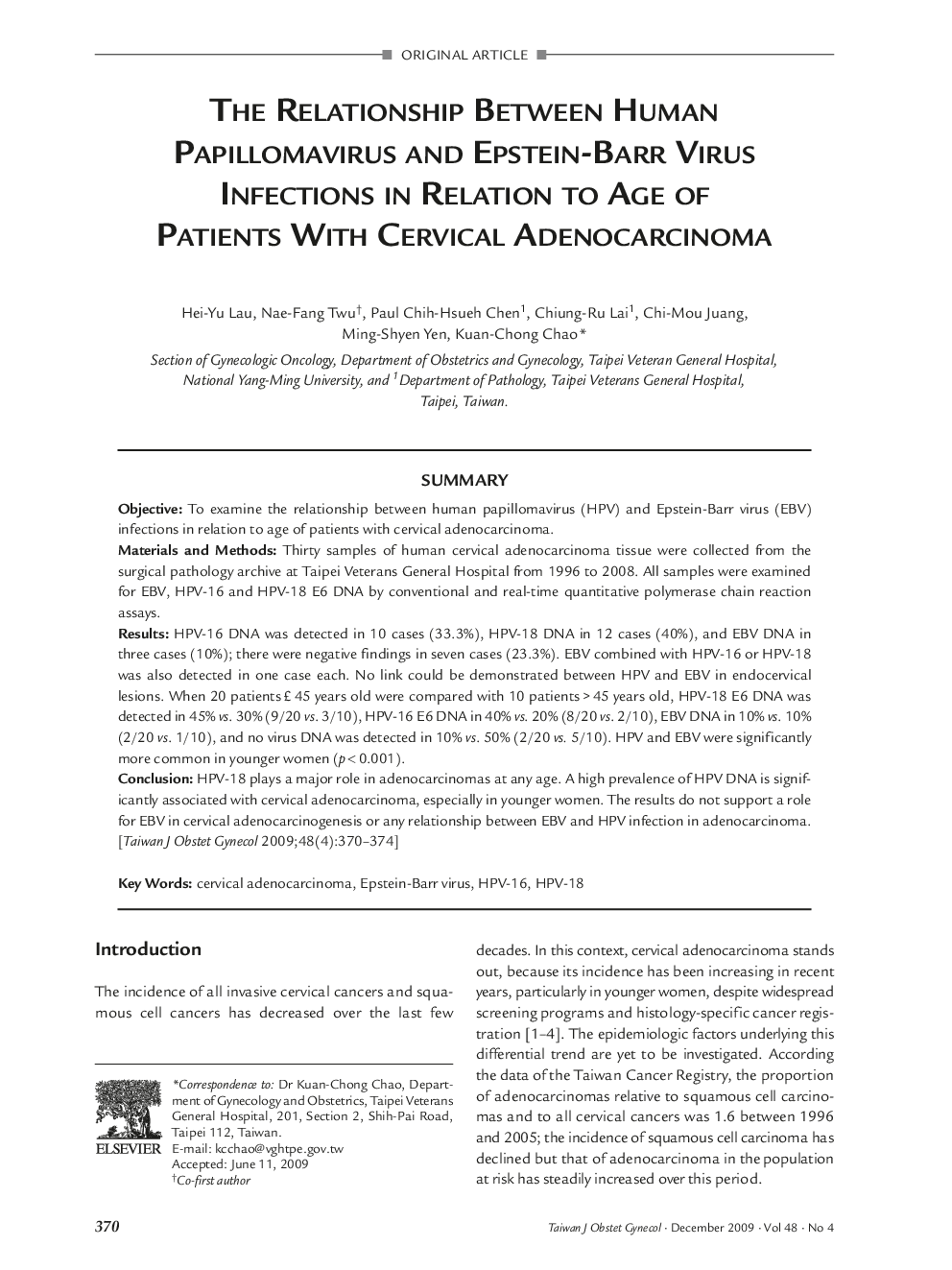| Article ID | Journal | Published Year | Pages | File Type |
|---|---|---|---|---|
| 3976174 | Taiwanese Journal of Obstetrics and Gynecology | 2009 | 5 Pages |
SummaryObjectiveTo examine the relationship between human papillomavirus (HPV) and Epstein-Barr virus (EBV) infections in relation to age of patients with cervical adenocarcinoma.Materials and MethodsThirty samples of human cervical adenocarcinoma tissue were collected from the surgical pathology archive at Taipei Veterans General Hospital from 1996 to 2008. All samples were examined for EBV, HPV-16 and HPV-18 E6 DNA by conventional and real-time quantitative polymerase chain reaction assays.ResultsHPV-16 DNA was detected in 10 cases (33.3%), HPV-18 DNA in 12 cases (40%), and EBV DNA in three cases (10%); there were negative findings in seven cases (23.3%). EBV combined with HPV-16 or HPV-18 was also detected in one case each. No link could be demonstrated between HPV and EBV in endocervical lesions. When 20 patients £ 45 years old were compared with 10 patients > 45 years old, HPV-18 E6 DNA was detected in 45% vs. 30% (9/20 vs. 3/10), HPV-16 E6 DNA in 40% vs. 20% (8/20 vs. 2/10), EBV DNA in 10% vs. 10% (2/20 vs. 1/10), and no virus DNA was detected in 10% vs. 50% (2/20 vs. 5/10). HPV and EBV were significantly more common in younger women (p < 0.001).ConclusionHPV-18 plays a major role in adenocarcinomas at any age. A high prevalence of HPV DNA is significantly associated with cervical adenocarcinoma, especially in younger women. The results do not support a role for EBV in cervical adenocarcinogenesis or any relationship between EBV and HPV infection in adenocarcinoma.
